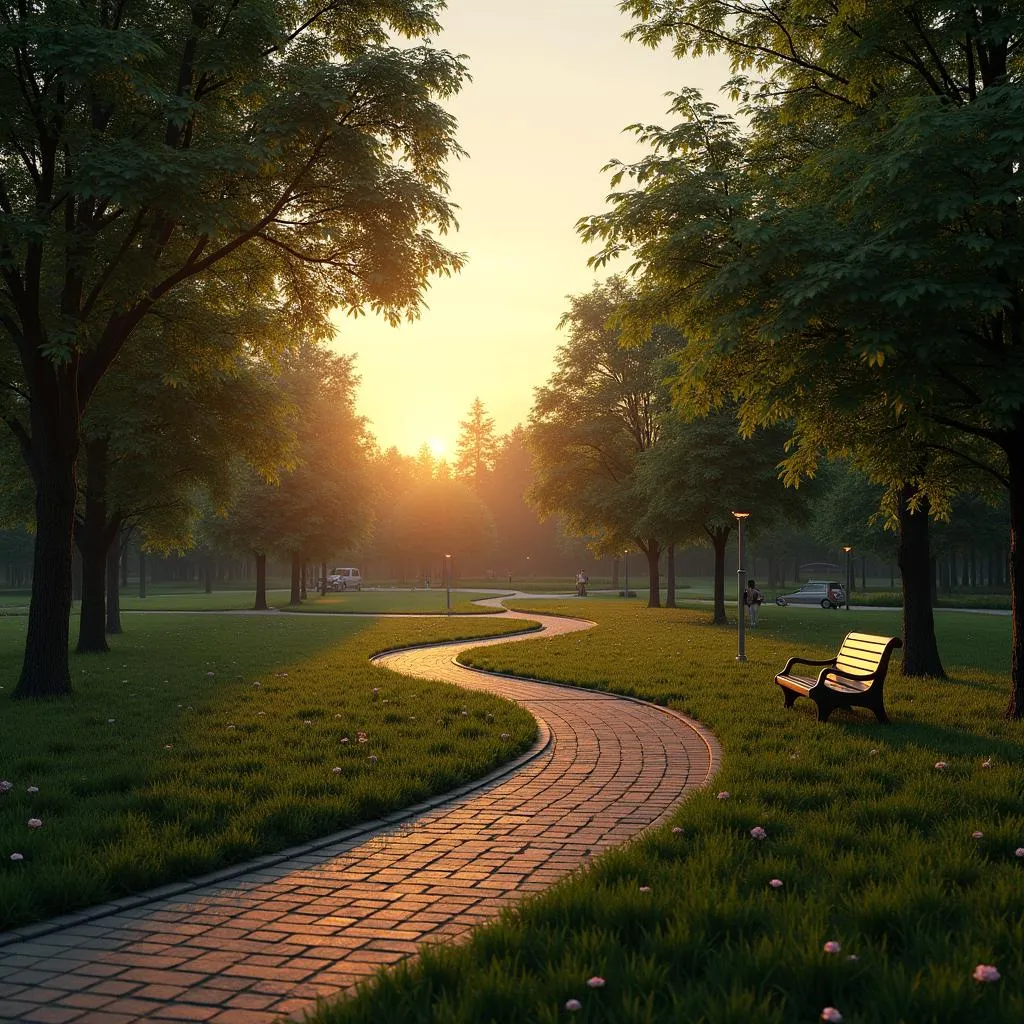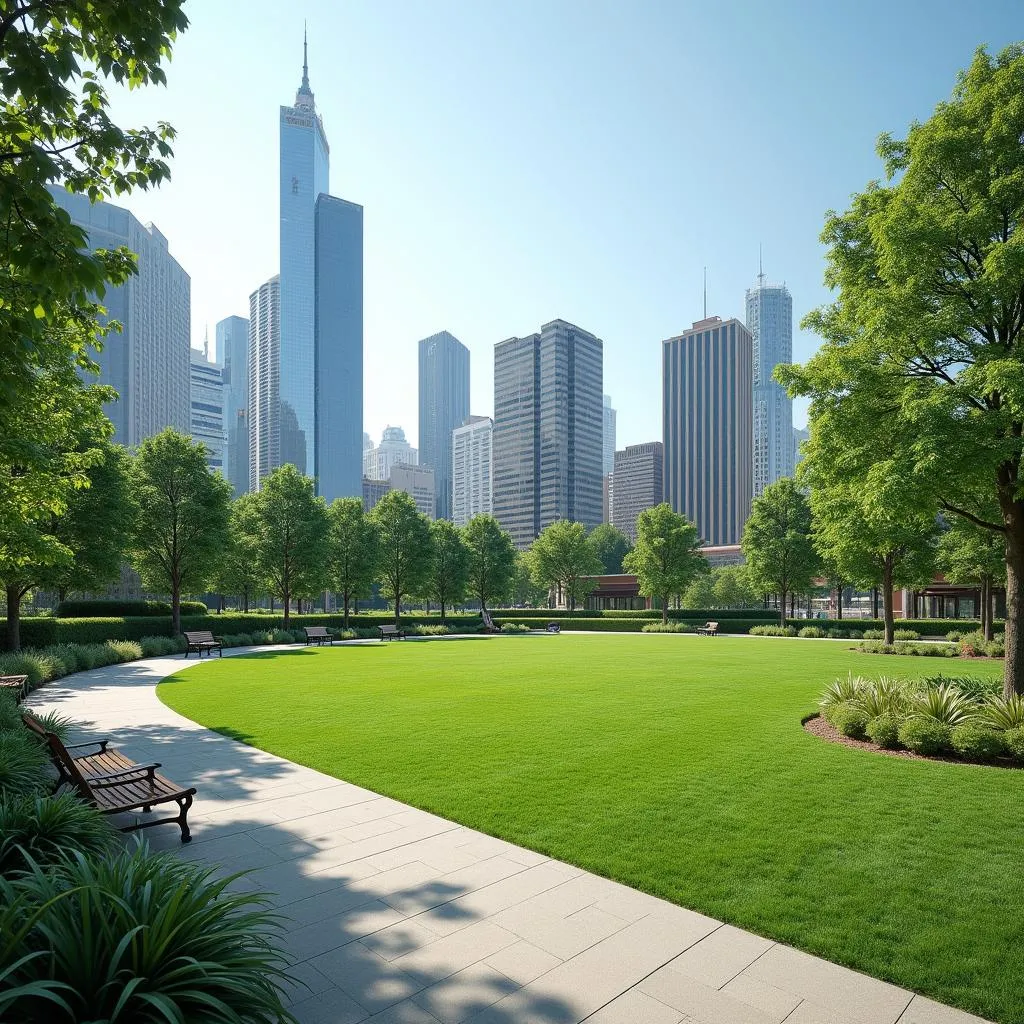The IELTS Speaking test often includes questions about personal experiences and preferences. One common topic is describing places you enjoy spending time, particularly in the evenings. This article will guide you through answering such questions effectively, focusing on the prompt “describe a place where you enjoy spending your evenings.”
Part 1: Introduction and Interview
In this section, the examiner may ask general questions about your evening habits and preferences. Here are some possible questions and sample answers:
- Do you prefer spending your evenings indoors or outdoors?
- What do you usually do in the evenings?
- How do you relax after a long day?
Let’s look at a sample answer for the first question:
Examiner: Do you prefer spending your evenings indoors or outdoors?
Sample Answer (Band 7-8):
“Well, it really depends on my mood and the weather. On pleasant evenings, I absolutely love being outdoors, perhaps taking a stroll in the park or sitting at a café terrace. There’s something refreshing about the cool evening air and watching the sunset. However, when it’s chilly or rainy, I definitely opt for staying indoors, curling up with a good book or watching a movie. I’d say I strike a balance between both, as variety keeps things interesting.”
Part 2: Long Turn
In this section, you’ll be given a cue card with a topic and some bullet points. Here’s a sample cue card related to our theme:
Describe a place where you enjoy spending your evenings.
You should say:
- Where this place is
- What you do there
- Who you go there with
- And explain why you enjoy spending time there in the eveningsSample Answer (Band 8-9):
“I’d like to talk about a charming little park near my home where I absolutely adore spending my evenings. It’s located just a stone’s throw away from my apartment, nestled in a quiet residential area.
This park is a haven of tranquility in the midst of our bustling city. It features winding paths lined with towering oak trees, a picturesque pond with a quaint wooden bridge, and several well-maintained flower beds that add splashes of color to the greenery.
 Peaceful park in the evening
Peaceful park in the evening
In the evenings, I often go there to unwind and recharge after a hectic day. Sometimes, I take a leisurely stroll along the paths, breathing in the fresh evening air and listening to the gentle rustling of leaves. Other times, I find a cozy spot on one of the weathered wooden benches to read a book or simply sit in quiet contemplation, watching the sky transform into a canvas of vibrant hues as the sun sets.
I usually visit this park alone, as it’s my personal retreat for solitude and reflection. However, occasionally, I invite a close friend to join me, and we engage in deep, meaningful conversations as we walk or sit by the pond.
 Friends chatting on a park bench
Friends chatting on a park bench
The reason I cherish this place so much is that it offers a perfect escape from the day’s stresses. The serene atmosphere allows me to clear my mind and find inner peace. Moreover, the park’s natural beauty never fails to uplift my spirits and remind me of the simple joys in life. It’s a place where I can reconnect with nature and with myself, making it an invaluable part of my daily routine.”
Follow-up Questions:
- Has this place changed much since you first started going there?
- Do you think it’s important for cities to have green spaces like this?
Sample answer for question 1 (Band 8-9):
“Actually, the park has undergone some subtle yet significant changes over the years. The local council has made concerted efforts to enhance its appeal and functionality. They’ve introduced new species of flowers to create more diverse and vibrant seasonal displays. Additionally, they’ve installed energy-efficient lighting along the paths, making it safer and more inviting for evening visitors. Perhaps the most noteworthy addition has been a small open-air amphitheater, which now hosts occasional community events and performances, breathing new life into the park without compromising its tranquil essence.”
Part 3: Two-way Discussion
In this section, the examiner will ask more abstract questions related to the topic. Here are some possible questions and sample answers:
Examiner: How do you think urban spaces for relaxation differ from those in rural areas?
Sample Answer (Band 8-9):
“The contrast between urban and rural relaxation spaces is quite striking. Urban areas typically offer more structured and designed spaces, such as manicured parks or purpose-built recreational facilities. These often need to maximize limited space and cater to a diverse population with varying needs. Consequently, they might include features like fitness equipment, children’s playgrounds, or dedicated areas for specific activities.
 Urban park with cityscape
Urban park with cityscape
In contrast, rural relaxation spaces tend to be more expansive and natural. They often leverage the existing landscape, such as forests, lakes, or rolling hills. These spaces usually provide a more immersive natural experience, allowing for activities like hiking, fishing, or simply enjoying unspoiled scenery.
The atmosphere also differs significantly. Urban spaces, while designed for relaxation, often still carry the underlying buzz of city life – distant traffic noise or the presence of many other people. Rural spaces, on the other hand, offer a more profound sense of solitude and connection with nature.
That said, both types of spaces serve crucial roles in their respective environments. Urban green spaces act as vital ‘lungs’ for cities, providing necessary respite from concrete and bustling streets. Rural spaces, meanwhile, offer city dwellers a chance to completely disconnect from urban life and recharge in a more profound way.
Ultimately, I believe the key difference lies in the level of escape they provide. Urban spaces offer a brief reprieve within the city context, while rural areas provide a more complete departure from urban living.”
Key Vocabulary and Phrases
To achieve a high score in IELTS Speaking, it’s crucial to use a range of sophisticated vocabulary and idiomatic expressions. Here are some key terms from the sample answers, along with their meanings and example sentences:
- Haven of tranquility (phrase) – A peaceful and quiet place
Example: The library was a haven of tranquility amidst the noisy city. - Stone’s throw away (idiom) – Very close or nearby
Example: The supermarket is just a stone’s throw away from our new house. - Unwind and recharge (phrase) – To relax and regain energy
Example: After a stressful week, I like to unwind and recharge by taking a long bath. - Canvas of vibrant hues (metaphor) – A colorful sky, often during sunset
Example: The sunset turned the sky into a canvas of vibrant hues, with oranges, pinks, and purples. - Concerted efforts (phrase) – Planned and coordinated attempts to achieve something
Example: The team made concerted efforts to finish the project before the deadline. - Breathe new life into (idiom) – To revitalize or reinvigorate something
Example: The new management breathed new life into the struggling company. - Manicured (adjective) – Carefully tended and maintained
Example: The hotel boasted manicured lawns and perfectly trimmed hedges. - Immersive (adjective) – Providing deep engagement or involvement
Example: The virtual reality game provided an immersive experience of underwater exploration.
Using these terms appropriately in your responses can significantly enhance the quality and sophistication of your speech.
Examiner’s Advice
To excel in the IELTS Speaking test, particularly when describing places:
- Use descriptive language: Paint a vivid picture with your words. Use adjectives and sensory details to bring your description to life.
- Structure your answer: Organize your thoughts logically, addressing all parts of the question.
- Show enthusiasm: Your tone and expression should convey genuine interest in the topic.
- Extend your answers: Provide reasons and examples to support your points.
- Use a variety of vocabulary: Incorporate idiomatic expressions and sophisticated vocabulary appropriately.
- Practice regularly: Familiarize yourself with common topics and practice describing various places and experiences.
Remember, the key to a high score is not just about what you say, but how you say it. Aim for fluency, coherence, and a natural conversational style.
In conclusion, mastering the art of describing places you enjoy, such as your favorite evening spot, can significantly boost your IELTS Speaking score. By following these guidelines and practicing regularly, you’ll be well-prepared to tackle this common topic with confidence and eloquence.
Describe a place where you like to go for long walks to further enhance your descriptive skills and expand your vocabulary for discussing outdoor activities.


